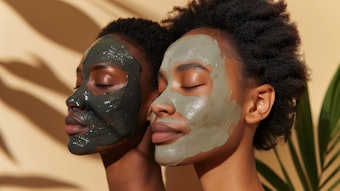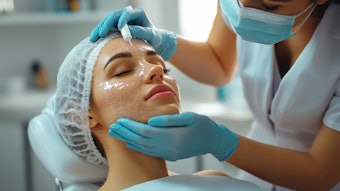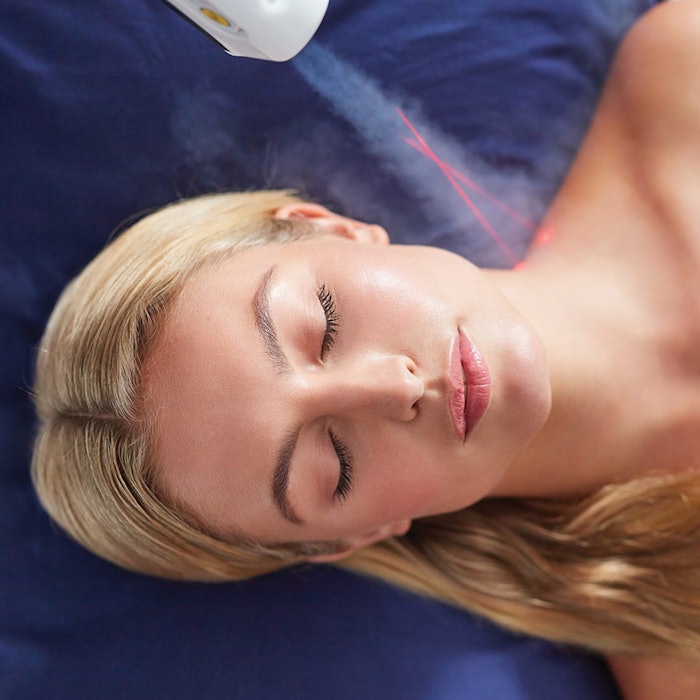
The management of rosacea and sensitive skin is often a perplexing prospect due to the variables surrounding the development and symptomology of sensitive skin subtypes and, more recently, sensitive skin syndrome. Through careful evaluation, a correlation must be made between physiological sensitivity and potential sources that may perpetuate skin reactivity. Undoubtedly, the synergistic relationship of topical products, effective treatment and sound home care regimens will assist in the management of clinical and subclinical presentations of sensitive skin.
One factor that has become evident in contributing to skin sensitivity is the frequency of systemic influences, such as medications and health conditions, which may drastically impact even the most calculated esthetic treatment plans. Sensitive skin syndrome has earned a specialized designation in dermatology, establishing a precedence in scientific research and evaluation as the many mechanisms for it are being explored. For one, topical products invariably cause the traditional rosacea or sensitive skin client to transition into more frequent and unexplained reactivity syndromes. With this in mind, the esthetic treatment room may need to explore variables in philosophy, modalities, product knowledge and selection; along with the integration and comprehension of an expansive skin assessment.
The good news is, some of the simplest measures and techniques may be employed to provide non-invasive assessment methods—often with impressive results.
Seeing Red
It is important to first understand the etiology of the inflammatory response in skin, including what vascular changes may occur throughout all aspects of rosacea and sensitive skin treatments. Inflammatory mediators, such as histamines, serotonin and prostaglandins, are main triggers in the onset of rosacea “flares.” Such reactions may be accompanied by chronic tissue damage caused by photoaging, leading to both vascular insufficiency and inflammatory rosacea. Vascular insufficiency includes the degradation of vascular collagen and weakened capillary integrity, compounding the hyper-responsiveness of capillaries. Other antagonists include those stored in the extracellular matrix, such as elastase and protease.
It is worth noting that severe and chronic sun damage may also lead to elastosis, which can perpetuate lymphatic insufficiency. Extracellular fluids may accumulate in the dermis, encouraging edema, inflammation and possible tissue hypertrophy. In fact, a recent study published in the Journal of the American Academy of Dermatology has confirmed that the most advanced stage of rosacea, rhinophyma, is the result of chronic lymphedema, which often appears in rosacea.2 Furthermore, a single dose of UVB (290-320 nm) induces epidermal thickening, dilation and hyper-permeability of blood vessels, edema and erythema.3
Manual Lymphatic Drainage
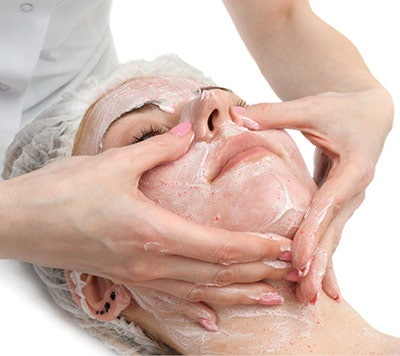 Manual lymphatic drainage aids in the reduction of edema, and therefore will assist in managing rosacea and venous congestion. The blood supply and lymphatic system play a major role in the overall homeostasis of skin. Specifically, angiogenesis and lymph angiogenesis result in the growth of new vessels from existing ones. The architecture of the cutaneous vascular system contains a plexus network of lower and horizontal formations. The lymphatic system features a similar plexus of branches leading from the dermal tissue that drain into larger lymphatic vessels in the lower dermis. The drainage continues into the subcutaneous tissue to be transported through the lymphatic watersheds, pathways and nodes.4
Manual lymphatic drainage aids in the reduction of edema, and therefore will assist in managing rosacea and venous congestion. The blood supply and lymphatic system play a major role in the overall homeostasis of skin. Specifically, angiogenesis and lymph angiogenesis result in the growth of new vessels from existing ones. The architecture of the cutaneous vascular system contains a plexus network of lower and horizontal formations. The lymphatic system features a similar plexus of branches leading from the dermal tissue that drain into larger lymphatic vessels in the lower dermis. The drainage continues into the subcutaneous tissue to be transported through the lymphatic watersheds, pathways and nodes.4Lymphatic stimulation activates key factors in anatomical physiology, serving as the conduit for the removal of waste. Lymphatic drainage drains toxins, reduces watery stagnations of edema, and improves lymph circulation and blood stasis. Cells are revitalized by oxygenation and re-balanced through healthy blood flow.
To effectively execute manual drainage, the technician must be knowledgeable and confident in dexterity, and in identifying the lymphatic topography of all of the channels of the facial lymphatic network. One of the most respected philosophies and approaches of manual lymphatic drainage in esthetics is the Vodder method, conceived by Emil Vodder, Ph.D., and his wife Estrid, N.D., in 1929.
Cold Water Compression
Many health benefits are provided by reducing the body’s core temperature and cooling the skin’s surface, particularly through cold water compression. Hydrotherapy in natural therapeutics is based on the concept of alternating hot and cold stimuli to abate symptoms of pain, injury and compromised circulation.
Esthetic devices such as HydraFacial and Jet Clear* utilize thermotherapy and hydrotherapy principles through water- and saline-propelled exfoliation devices, which are beneficial and therapeutic for rosacea.
While hot towels should not be used on rosacea or sensitive skin types, cold cotton compresses, fabric compresses or herbal poultices offer a decongesting effect for sensitive skin and rosacea. These compresses may be applied on top of a soothing mask or at the end of the treatment for comfort and to reduce inflammation. It also will make mask removal easier. Cold compresses offer five main benefits, as outlined below.
Pulverizer
In the 1870s, French surgeon Just Lucas- Championnere, M.D., developed the pulverizer apparatus that later became a primary esthetic device in Europe for decades.5 The Dr. Lucas Championnere Mist Sprayer & Pulverizer has recently increased in popularity due to the holistic esthetics movement. The device is a versatile water vapor accessory that may be used in place of the traditional esthetic steamer.
One of the primary benefits of the device is its ability to emit a super fine vapor mist, suited for even the most fragile of skin types. The glass reservoir on the unit may be filled with herbal tinctures, floral hydrosols or teas, which are infused with water from the main cylinder into a warm, soft mist that hydrates and soothes the skin while supplying beneficial phytonutrients from the extracts.
Cooling Devices
Cryotherapy or cold therapy is a common modality used in both alternative and allopathic medicine, specifically in sports medicine and pain management. These concepts are based on icing, which is used to transfer thermal energy in a short timeframe. Icing therapy is well-recognized to diffuse swelling. It also acts on tissue metabolism and hemodynamics (dynamics of blood flow), which greatly contribute to inflammation reduction. Physiological responses offer immediate and often visible vasoconstriction, along with reflexive vasodilation, decreased localized metabolism (and thus, reducing expended cellular stress) and a decreased nerve conduction rate. Localized cryotherapy reduces the tissue temperature to slow the rate of physiochemical reactions involved in the inflammation process. It reduces edema, has an analgesic response and decreases blood flow.1
Dermal tissue is greatly influenced through temperature by permitting or diverting the blood to reach the surface of the skin. When skin is exposed to cold temperatures, the small arterioles in the dermis constrict, resulting in reduced blood flow thereby protecting the core skin temperature. On the other hand, when the skin is “heated,”either by temperature, friction or by response to chemicals, the effect is vasodilation.
 A variety of handheld instruments made from glass, ceramic or metal filled with cryogenic liquid material provide cooling, vaso-constricting activity. They can be used frequently, specifically at the end of the esthetic service. Below is a list of such devices, in no particular order.
A variety of handheld instruments made from glass, ceramic or metal filled with cryogenic liquid material provide cooling, vaso-constricting activity. They can be used frequently, specifically at the end of the esthetic service. Below is a list of such devices, in no particular order.- Microcurrent golden spoons
- Cryogenic cooling globe wands
- Cold “hammer”
- Stainless steel rollers
- Cold marble stones in a disc shape
- Crystal face wands
- Gemstone rollers in jade or amethyst
- Cyrogenic masks (full face mask)
- Hand-held icing wand
The localized application of these instruments adeptly introduces the principal of contraction, attending to vaso distensions, inflammation and the reduction of edema. The cooling devices may also be used with an anti-inflammatory gel or a moist mask medium for an easy glide, as they soothe the skin. Cold therapy should be applied in short sessions and for no longer than 10 minutes at a time.
Light Emitting Diode (LED)
LEDs have an impressive history of assisting in the reduction of both inflammation and vasodilation. Visible red and infrared (IR) wavelengths can adapt the mechanisms of epidermal keratinocytes to increase localized blood flow. This has positive effects, such as oxygenation and the transfer of nutrients to the treated area. Furthermore, the wavelength-specific output of 630–670 nm raises the potential of macrophages, fibroblasts and keratinocytes, as well as anti–inflammatory and immune-supportive effects.
The 660–680 nm red wavelength appears to be the most effective for esthetic applications. This range is closer to the actual resonance frequency of a healthy cell and stimulates adenosine triphosphate (ATP). The stimulation of ATP reduces the vulnerability of nerve tissue and triggers positive ions and minerals to the site of treatment. The orange-red range of 560–780 nm is also effective for skin rejuvenation treatments related to rehabilitating microcirculation and encouraging fibroblast activity.6
Microcurrent
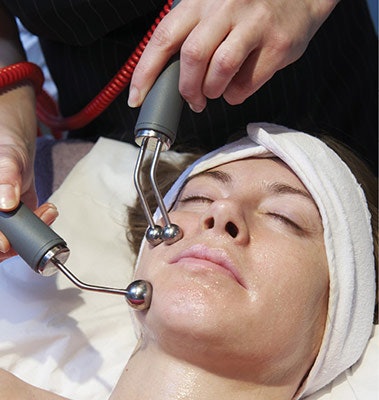 Microcurrent supplies a pulsed, subsational current that resembles the body’s own biological current. It is effective in assisting with edema and vascular congestion. Many studies have examined its use to treat diabetic neuropathy and conditions caused by vascular insufficiency. One of the main factors affecting compromised blood flow is the deprivation of oxygen in the capillary beds and, as a result, impaired basement membrane function. Without conducive blood flow, oxygen and nutrients cannot reach tissues and waste products of metabolism cannot go through phagocytosis. Microcurrent at the recommended frequency of 300-500 micro amps in a range from 20-300 Hz is effective in stimulating muscles to contract and relax, to pump blood and encourage microcirculation.
Microcurrent supplies a pulsed, subsational current that resembles the body’s own biological current. It is effective in assisting with edema and vascular congestion. Many studies have examined its use to treat diabetic neuropathy and conditions caused by vascular insufficiency. One of the main factors affecting compromised blood flow is the deprivation of oxygen in the capillary beds and, as a result, impaired basement membrane function. Without conducive blood flow, oxygen and nutrients cannot reach tissues and waste products of metabolism cannot go through phagocytosis. Microcurrent at the recommended frequency of 300-500 micro amps in a range from 20-300 Hz is effective in stimulating muscles to contract and relax, to pump blood and encourage microcirculation.The benefits of microcurrent for sensitive skin or rosacea include: increased blood circulation, vasodilation and improved venous function, improved vascular tone, angiogenesis stimulation, reduction of edema and inflammation, facilitation of lymphatic drainage, increased protein synthesis (gluconeogenesis), improved cell metabolism and tissue repair.
Think Critically
Each of these modalities may be combined, alternated and applied at various phases of esthetic treatment, depending on the skin’s presentation. It is important to qualify the ingredient deck of your product choices to ensure that they will be compatible with any electrical modality or light based application. Equally, emphasis should be placed on all aspects of the client’s symptomology, possible antagonists for inflammation, medications, topical and internal allergies and home care regimens. The capacity to investigate, problem-solve and apply critical thinking in your techniques will offer a new perspective in your approach to the management of sensitive skin.
*HydraFacial is manufactured by Edge Systems. Jet Clear is is distributed in the U.S. by Eric M. Inc.









